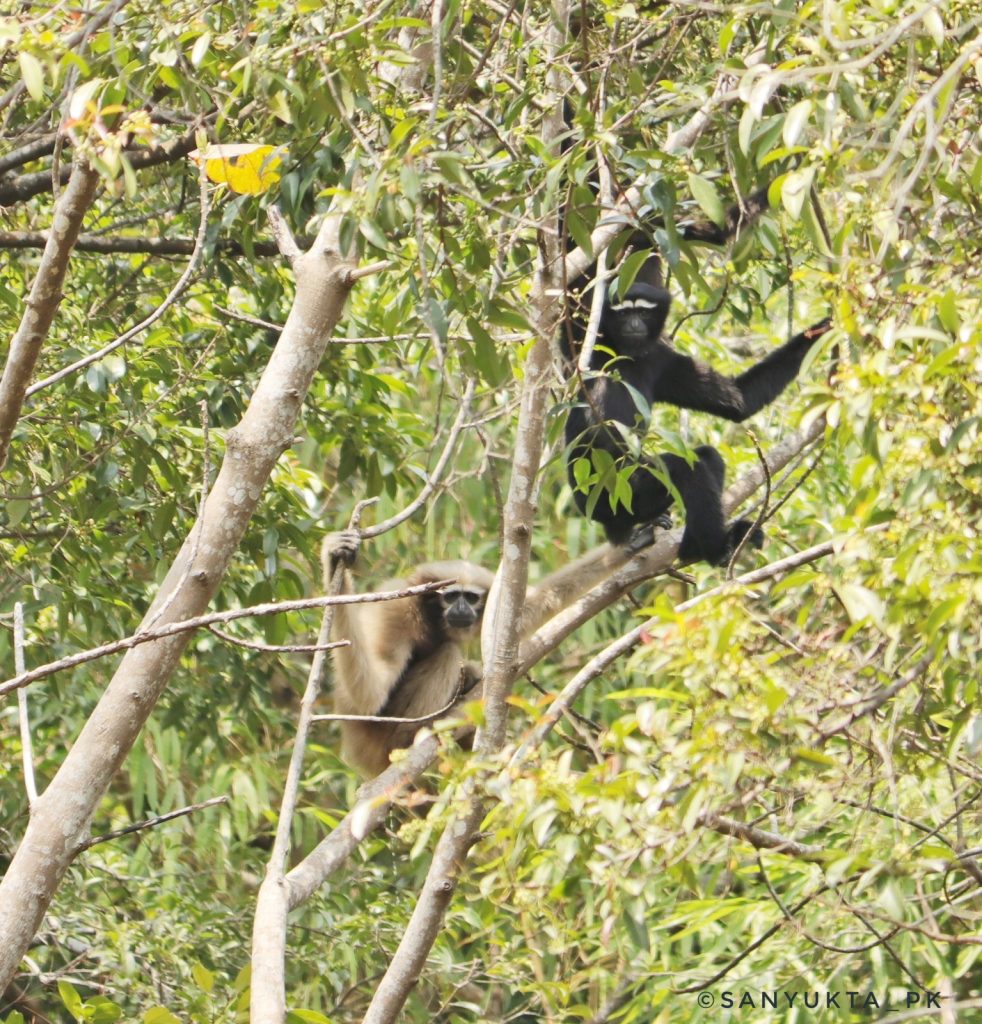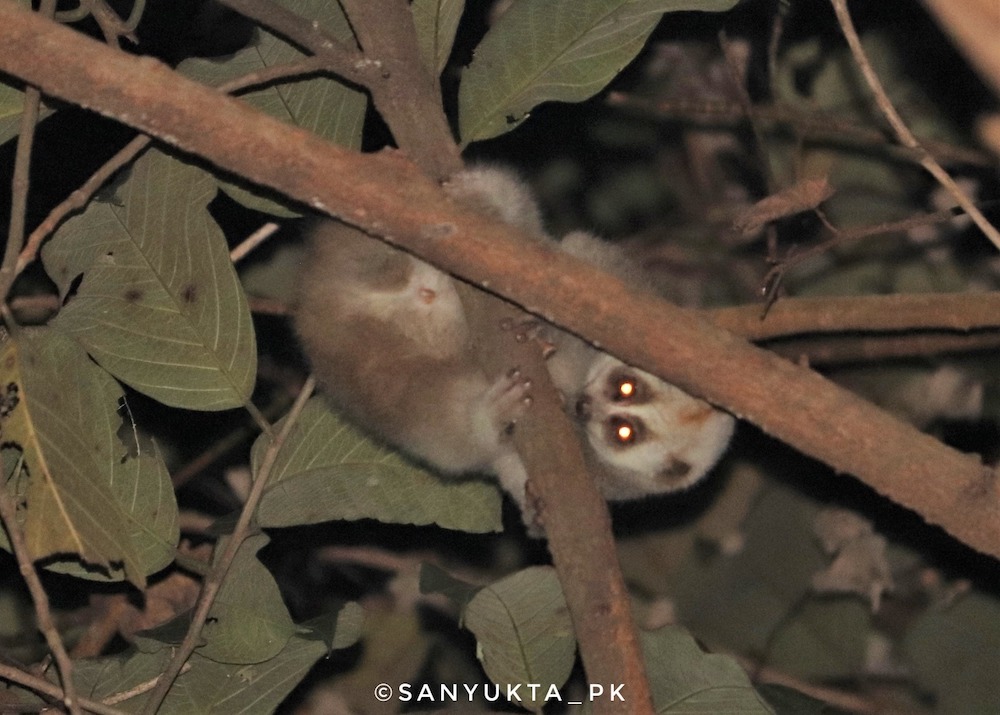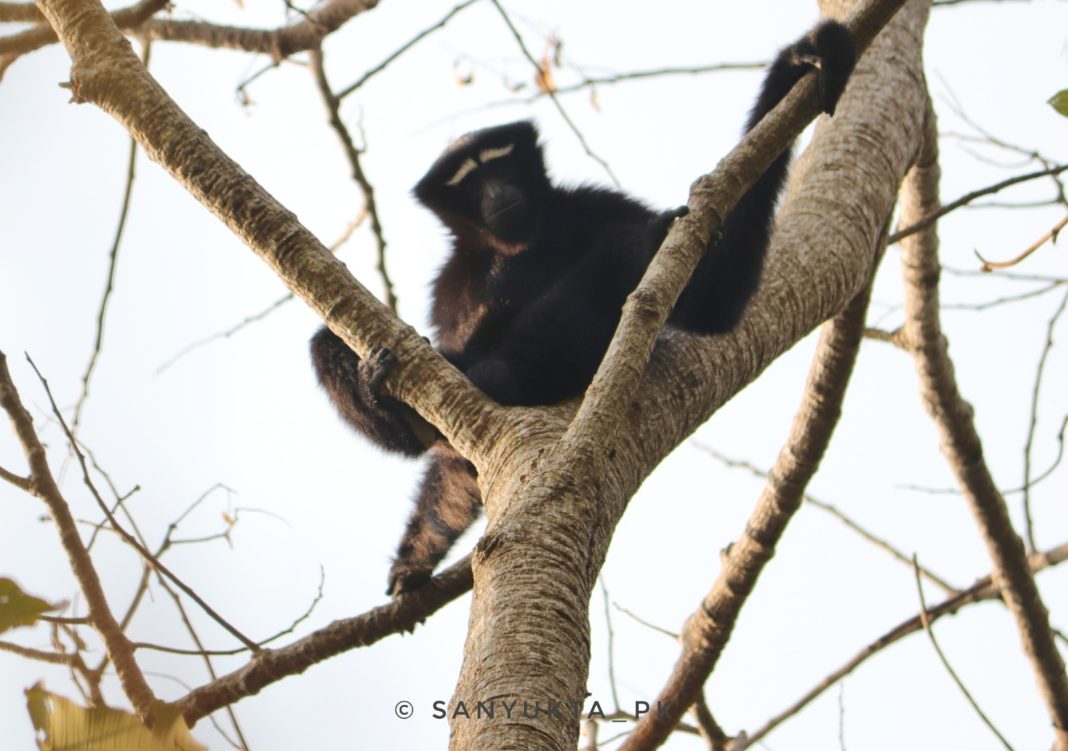Roopak Goswami
Shillong, Dec 23: A study led by researchers from the Sálim Ali Centre for Ornithology and Natural History reveals that the size and vegetation of community reserves (CRs) in Meghalaya, play a pivotal role in the conservation of primates.
The study, conducted by Sanyukta P. Kasbekar, Honnavalli N. Kumara, Siddhesh Sitaram Bhor, S. Babu, and P.V. Karunakaran, and published in Folia Primatologica journal highlights the importance of community-managed forests in protecting biodiversity amid increasing anthropogenic pressures. The study is funded by the National Mission on Himalayan Studies under the Ministry of Environment, Forest, and Climate Change.

The Study: Exploring Conservation in Meghalaya
Meghalaya, part of the Indo-Burma Biodiversity Hotspot, is home to seven species of primates, including the endangered Western hoolock gibbon (Hoolock hoolock) and Bengal slow loris (Nycticebus bengalensis). This study surveyed 32 CRs across the Garo, Khasi, and Jaintia Hills, using trail surveys, camera traps, and community interviews to understand primate occupancy and local perceptions.
Researchers found that primate diversity and abundance were highest in the Garo Hills, while many CRs in the Khasi and Jaintia Hills reported a lack of primate presence. Six species of primates were recorded, with gibbons and capped langurs showing higher occupancy in reserves with dense canopy cover and significant canopy height.
Western hoolock gibbons were found in 10 CRs, with their presence strongly linked to larger reserve sizes and continuous canopy cover. Capped langurs thrived in dense forests but were also hunted for food, affecting their population. Assamese macaques and Northern pig-tailed macaques showed adaptability to disturbed forests but were highly susceptible to hunting pressures.
Local Perceptions and Challenges
Interviews with 200 households revealed complex interactions between humans and primates. Many respondents identified macaques as pests due to crop depredation, leading to significant hunting. Gibbons and slow lorises, on the other hand, were often surrounded by cultural taboos, with some communities avoiding them altogether due to superstitions.
The most hunted primates were macaques, driven by both conflict and consumption. Alarmingly, primate hunting persisted despite awareness of legal protections, emphasizing the need for stronger enforcement and community engagement.

Implications for Conservation
This study underscores the critical role of CRs in supporting primates in fragmented landscapes. However, the small size of these reserves, coupled with ongoing habitat degradation and hunting, poses severe threats to primate populations. The authors call for targeted habitat restoration and community-led conservation initiatives, drawing parallels to successful examples like the increased density of yellow-tailed woolly monkeys in community reserves in Peru.
The study also highlights the need for continued monitoring and education programs to foster a sustainable coexistence between humans and wildlife. Without immediate action, the unique biodiversity of Meghalaya’s CRs risks being confined to history books.
The findings of Kasbekar and her colleagues present a sobering yet hopeful narrative. While primate populations face significant challenges in Meghalaya, the state’s community reserves offer a beacon of possibility. Through informed management and active community participation, these reserves could evolve into thriving sanctuaries for some of India’s most threatened primates.




